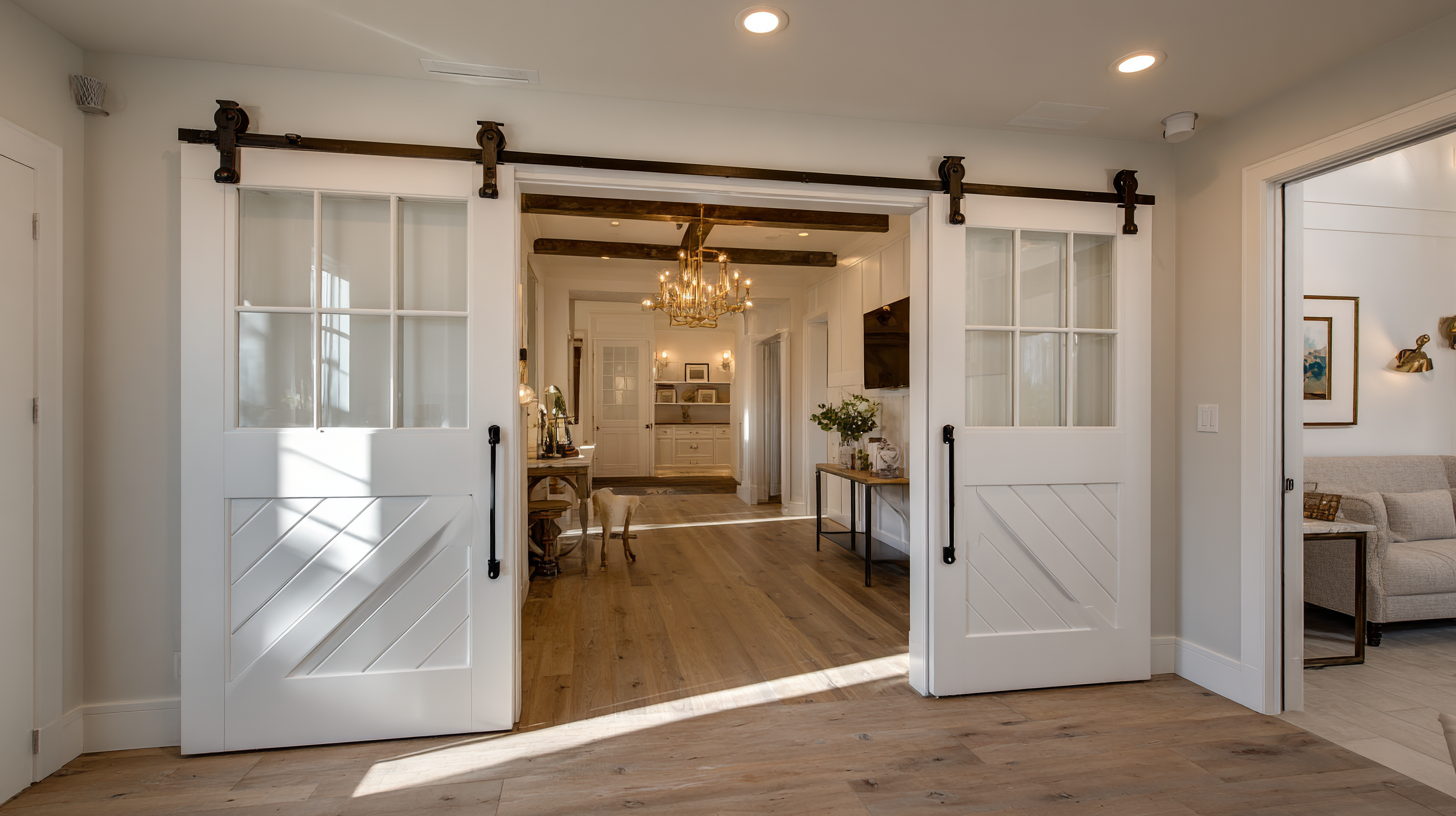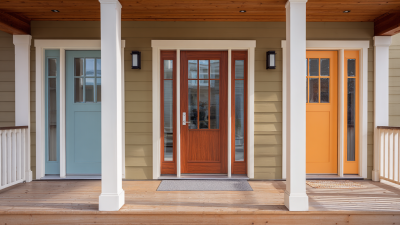Home / Blog
Smart Ways to Choose Budget Doors for Your Home Renovation
When embarking on a home renovation, choosing the right budget doors can significantly impact your project’s overall cost and aesthetic appeal. According to a recent report by the National Association of Realtors, high-quality entry doors can recover up to 70% of their cost at resale, underscoring the importance of making informed decisions during renovations. Moreover, with the growing trend of sustainable renovations, the demand for budget doors that offer both affordability and environmental considerations has surged. A study from the Remodeling 2023 Cost vs. Value report indicates that homeowners are increasingly looking for door options that blend style with cost-effectiveness, leading to an uptick in suppliers offering energy-efficient options without compromising on design. Understanding your choices and prioritizing quality within your budget not only enhances your home’s value but also provides long-term benefits for energy savings and maintenance.

Table of Contents
[Hide]
Smart Budget Door Options to Enhance Home Aesthetics
Choosing budget doors for your home renovation doesn't mean sacrificing style and aesthetics. One smart option to consider is using solid-core doors, which offer durability and a more luxurious feel compared to hollow-core varieties. These doors come in a variety of finishes and can be painted or stained to match your existing decor, providing a sophisticated touch without breaking the bank. Additionally, opting for pre-hung doors can streamline the installation process, saving both time and labor costs while also ensuring a polished, professional look.
Another great budget-friendly choice is the use of composite or engineered wood doors. These materials not only mimic the appearance of traditional wood but also boast better resistance to moisture and warping, making them ideal for areas prone to humidity. Pairing these doors with stylish hardware can significantly elevate their visual appeal, giving your home a modern and cohesive vibe. With thoughtful selection and a little creativity, you can enhance your home’s overall aesthetic while staying within your renovation budget.
Smart Ways to Choose Budget Doors for Your Home Renovation - Smart Budget Door Options to Enhance Home Aesthetics
| Door Type | Material | Average Cost | Durability | Aesthetic Appeal |
|---|---|---|---|---|
| Hollow Core Door | MDF | $50 - $100 | Medium | Basic |
| Solid Core Door | Wood | $100 - $200 | High | Elegant |
| Fiberglass Door | Fiberglass | $200 - $500 | Very High | Versatile |
| Steel Door | Steel | $100 - $300 | High | Modern |
| French Door | Wood or Vinyl | $300 - $800 | High | Charming |
Top 5 Budget-Friendly Door Materials for Renovation Projects
Choosing budget-friendly materials for doors during your home renovation can significantly impact the overall aesthetic and functionality of your space. According to a recent study published by the National Association of Home Builders (NAHB), homeowners can save up to 30% on renovation projects by opting for cost-effective materials. Here are the top five door materials that won't break the bank while still delivering style and durability.
First on the list is hollow-core doors, which are an economical choice commonly made from a cardboard honeycomb core and an outer layer of wood or fiberglass. These doors are lightweight yet sturdy, making them an ideal option for interior spaces. For exterior needs, fiberglass doors offer an excellent balance of cost and energy efficiency. They can mimic the look of wood while providing superior insulation, which can be crucial; the U.S. Department of Energy estimates that energy-efficient doors can save homeowners between $100 and $400 annually on energy bills.
Another great budget option is steel doors, renowned for their strength and security. The Steel Door Institute reports that steel doors can withstand harsh weather, making them a long-term investment. Lastly, vinyl doors present an affordable solution that is resistant to fading and requires little maintenance. With these materials, homeowners can achieve a stylish look without exceeding their renovation budgets, ensuring a successful and economical home transformation.

Key Considerations for Selecting Affordable Doors
When selecting affordable doors for your home renovation, it's essential to consider both functionality and aesthetic appeal. Start by evaluating the purpose of each door—whether it’s for interior, exterior, or specific rooms like bathrooms or bedrooms. Interior doors can be less costly, while exterior options require durability and weather resistance. Assess the materials available, such as fiberboard, solid wood, or hollow core. Each material comes with its own price range, so weigh your options based on longevity and maintenance.
Another critical factor is the door's style and how it complements your home’s overall design. Consider the architectural theme of your house when choosing door styles, such as traditional, modern, or rustic. Additionally, sizes and finishes should align with the decor. Look for cost-effective solutions like pre-hung or slab doors that may offer significant savings. Finally, don’t forget to factor in installation costs, as some doors may require professional help, which can impact your budget. Taking the time to research and compare options will yield a selection that balances quality and affordability.

7 Stylish Door Designs That Won’t Break the Bank
When renovating your home, choosing stylish yet budget-friendly doors can make a substantial impact without straining your finances. One of the most appealing options is the classic paneled door, which offers a timeless look while remaining affordable. Available in various finishes, these doors seamlessly blend with both modern and traditional interiors, enhancing the overall aesthetic of your space.
Another great choice is a barn door, which not only adds a rustic charm to your home but also optimizes space due to its sliding mechanism. Barn doors come in an array of materials and colors, allowing you to customize them to your liking. For a more contemporary feel, consider a frosted glass door. This design not only provides privacy but also allows natural light to flow between rooms, creating an open and airy atmosphere. Embracing these stylish door options helps ensure your renovation stays on budget while elevating your home’s interior design.
Best Practices for Measuring and Installing Budget Doors
When selecting budget doors for your home renovation, accurate measurement is crucial. According to the Door and Access Systems Manufacturers Association (DASMA), improper measurements can lead to costly mistakes, accounting for up to 30% of installation problems. To avoid this, start by measuring the height and width of your doorframe. Remember to consider the door thickness as well. A standard interior door is usually about 1 ⅜ inches thick, while exterior doors are often 1 ¾ inches. Utilizing a tape measure and a level can ensure you capture precise dimensions.
Installation is another key factor in achieving a professional look. The National Association of Home Builders (NAHB) suggests following a step-by-step installation guide to avoid common pitfalls. This includes ensuring the door is square and level before securing it in place. Using shims to fill any gaps can prevent future issues like warping or misalignment. Although DIY installations can save money, consider enlisting the help of a professional for the finishing touches, especially if the doors are heavy or complex in design. Investing in proper installation can significantly enhance the longevity and performance of your budget doors.



